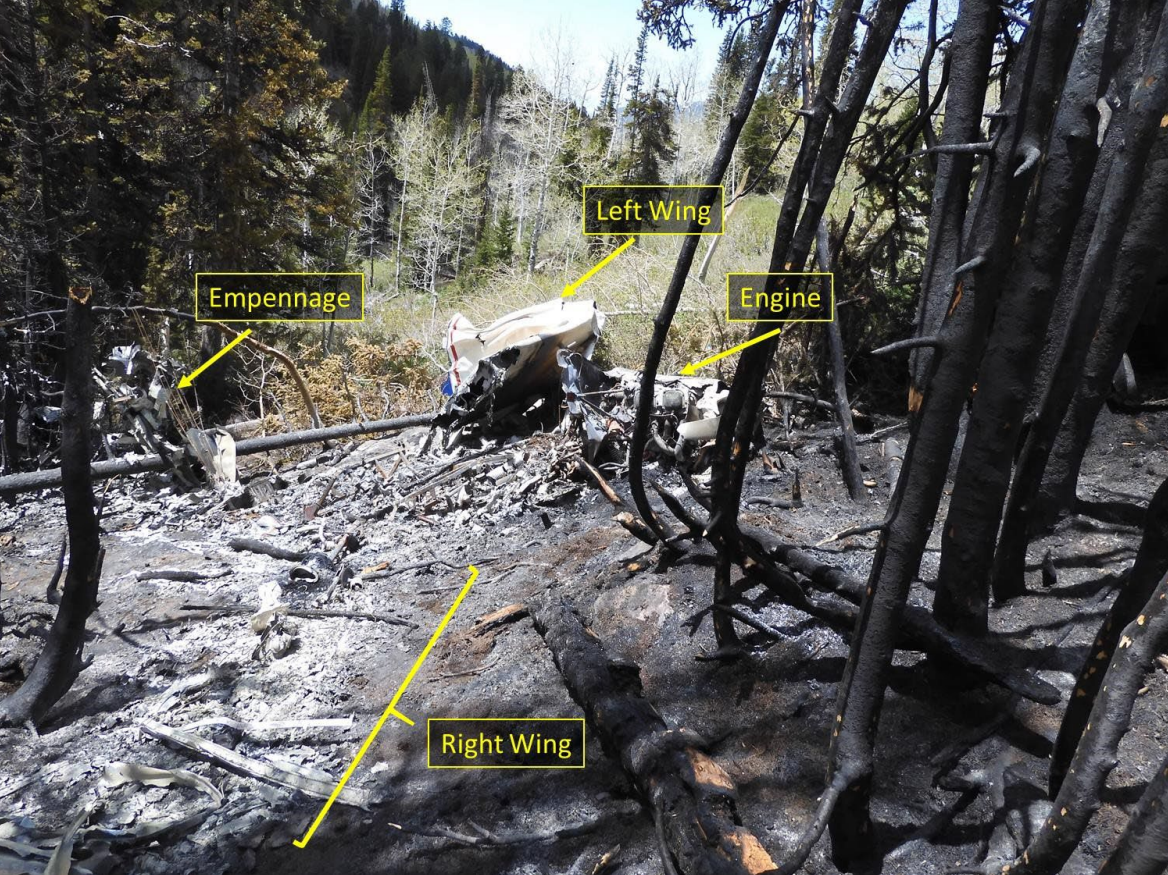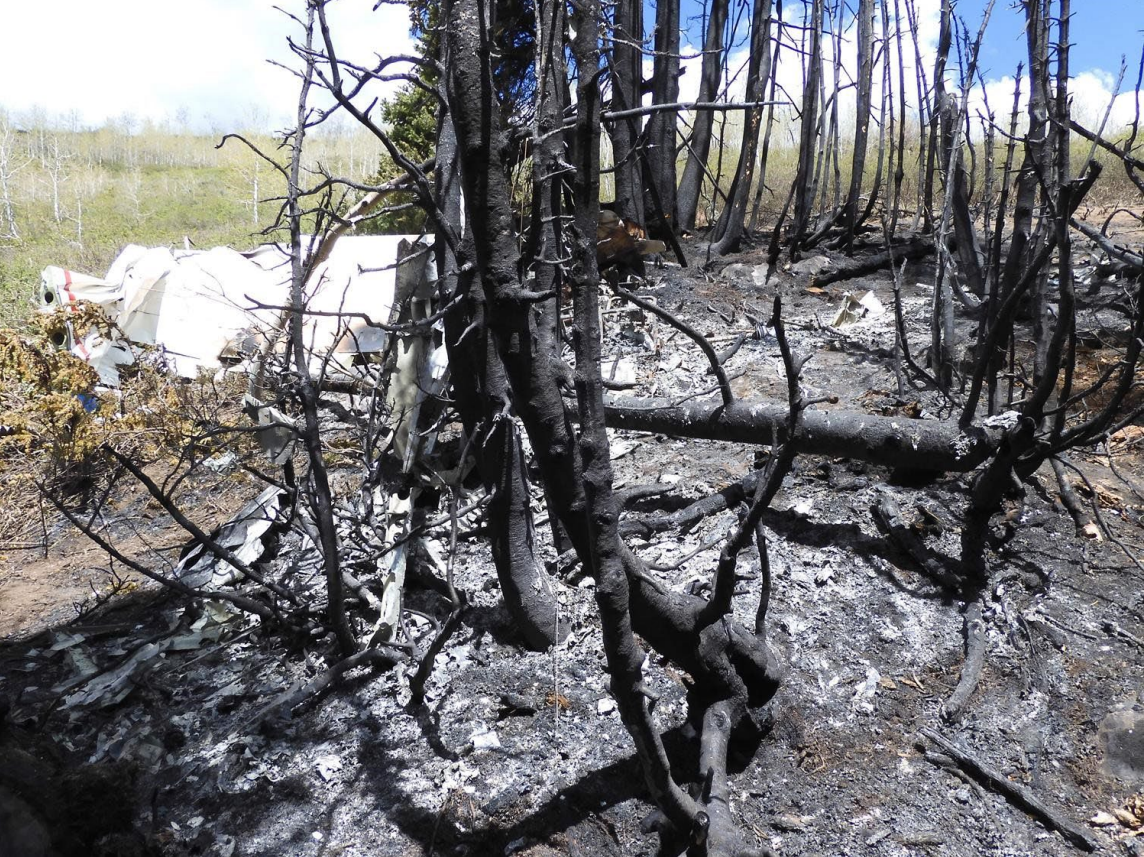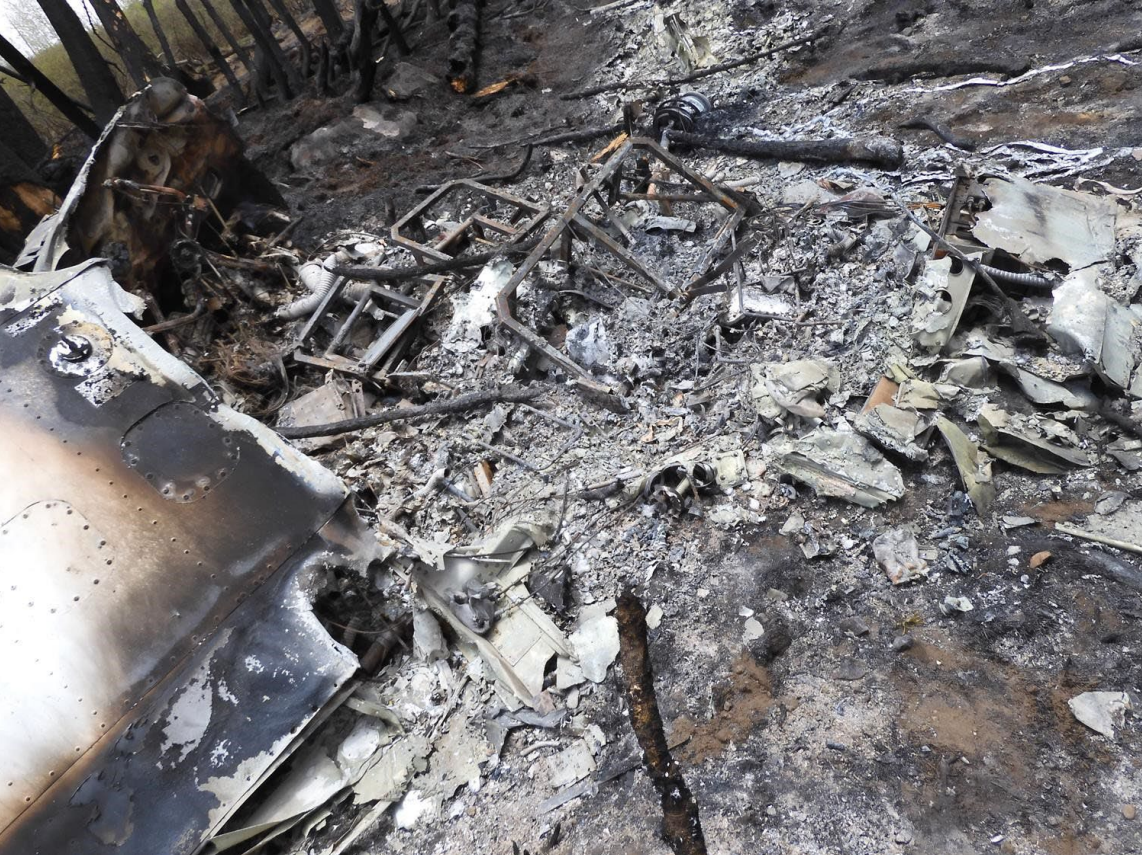
ASN Wikibase Occurrence # 263375
This information is added by users of ASN. Neither ASN nor the Flight Safety Foundation are responsible for the completeness or correctness of this information.
If you feel this information is incomplete or incorrect, you can submit corrected information.
| Date: | Saturday 29 May 2021 |
| Time: | 10:00 |
| Type: |  Cessna 172S Skyhawk SP |
| Owner/operator: | Flight Operations Aircraft LLC |
| Registration: | N1727T |
| MSN: | 172S12056 |
| Year of manufacture: | 2017 |
| Total airframe hrs: | 3006 hours |
| Engine model: | Lycoming IO-360-L2A |
| Fatalities: | Fatalities: 2 / Occupants: 2 |
| Aircraft damage: | Destroyed |
| Category: | Accident |
| Location: | near Eden, UT -
 United States of America United States of America
|
| Phase: | En route |
| Nature: | Training |
| Departure airport: | Ogden Municipal Airport, UT (OGD/KOGD) |
| Eden, UT | |
| Investigating agency: | NTSB |
| Confidence Rating: |
On May 29, 2021, about 1000 mountain daylight time, a Cessna 172S airplane, N1727T, was destroyed when it was involved in an accident near Eden, Utah. The flight instructor and student pilot were fatally injured. The airplane was operated as a Title 14 Code of Federal Regulations Part 91 instructional flight.
The flight instructor departed on an introductory training flight with a prospective student and initially flew a standard flightpath for this type of flight. At some point, the instructor, elected to enter a canyon presumably to overfly a nearby mountain The airplane entered the canyon initially with about 1,000 ft of clearance above the terrain but then impacted rising terrain about 2 to 3 minutes later when the airplane was about 2 miles into the canyon.
Postaccident examination of the wreckage revealed no preimpact mechanical anomalies that would have precluded normal operation. Performance computations showed that the airplane should have been able to successfully climb out of the canyon. However, meteorological evidence indicated that the airplane likely encountered a downdraft and possible mountain wave conditions near the canyon. Specifically, the wind profile over the canyon was favorable for mountain wave conditions with downdrafts of about 500 ft per minute at an altitude of about 10,000 ft mean sea level. Although the altitude in the profile was above the airplane’s last recorded altitude, the airplane likely still encountered a downdraft given that the flight instructor was able to tell a sheriff’s deputy (immediately after the accident) that he “got caught in a downdraft.” Thus, a downdraft likely resulted in a loss of control and the airplane’s impact with terrain.
Although the accident pilot had limited experience as a flight instructor at the time of the accident, he possessed the basic airmanship skills required for the flight. However, the instructor demonstrated improper aeronautical decision-making when he decided to enter the mountainous area, especially given that the operator did not provide its flight instructors with any practical mountain flight training. Other company flight instructors reported that they would not have entered that area during introductory training flights.
The accident flight was the fifth introductory training flight that the flight instructor conducted but the first that was operated over the mountainous area. The reason that the flight instructor decided to operate in the mountainous area could not be determined from the available evidence. Nevertheless, by entering the mountainous area unnecessarily, the flight instructor placed the airplane in a hazardous situation that ultimately led to downdraft encounter from which he could not recover.
Postmortem toxicology testing of the pilot’s blood detected multiple medications commonly administered for resuscitation or severe pain management: ketamine, norketamine, propofol, morphine, fentanyl, norfentanyl, lorazepam, and midazolam. The investigation determined that the ketamine, norketamine, fentanyl, norfentanyl, midazolam, morphine and lorazepam were likely administered during life-saving efforts. Propofol is a short-acting anesthetic administered by hospital anesthetists. Thus, the identified medications were likely administered post-accident and did not contribute to the accident.
Probable Cause: The flight instructor’s improper aeronautical decision-making, which led to an encounter with a downdraft at a low altitude in mountainous terrain and resulted in the instructor’s loss of airplane control and an impact with terrain.
Accident investigation:
 |
|
Sources:
https://www.sltrib.com/news/2021/05/29/utah-man-dies-small-plane/
NTSB
FAA
https://registry.faa.gov/AircraftInquiry/Search/NNumberResult?nNumberTxt=N1727T
https://cdn.jetphotos.com/full/5/56484_1543175781.jpg (photo)
Location
Images:



Photos: NTSB
Media:
A small plane crashed in Weber County near Powder Mountain at about 10:20 this morning. Two people were on board, one of them died. We’re about to get an update from @WeberCoSheriff and will have more info shortly. @KSL5TV pic.twitter.com/wUsuGeyGbc
— Alex Cabrero (@KSL_AlexCabrero) May 29, 2021
The NTSB is investigating the crash Saturday of a Cessna 172S in Eden, Utah. Investigators are responding to the scene.
— NTSB_Newsroom (@NTSB_Newsroom) May 29, 2021
Revision history:
| Date/time | Contributor | Updates |
|---|---|---|
| 29-May-2021 19:00 | Captain Adam | Added |
| 29-May-2021 19:36 | harro | Updated [Operator, Embed code] |
| 29-May-2021 22:28 | Captain Adam | Updated [Aircraft type, Embed code] |
| 30-May-2021 13:01 | gerard57 | Updated [Total fatalities, Embed code, Narrative] |
| 31-May-2021 05:22 | RobertMB | Updated [Time, Phase, Nature, Departure airport] |
| 01-Jun-2021 14:42 | RobertMB | Updated [Registration, Cn, Operator, Location, Source] |
Corrections or additions? ... Edit this accident description
The Aviation Safety Network is an exclusive service provided by:


 ©2024 Flight Safety Foundation
©2024 Flight Safety Foundation